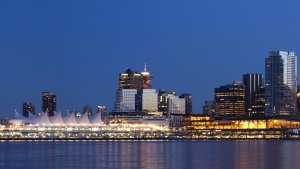Clean Energy Canada | The way we understand energy in B.C. needs to change
May 29, 2019

There’s a good chance that powerful ministers from across the globe are having important conversations in Vancouver as you read this.
If that’s news to you, it’s because the annual Clean Energy Ministerial is not a public event, but it is an influential one, in which the world’s energy ministers and clean energy industry leaders gather, share ideas, and make pledges. This year, the conversation is happening in Vancouver, having previously been held in cities such as London, Beijing, and San Francisco.
It is, in short, the time of the year when the world comes together to discuss a global clean energy transition that is already well underway.
As for housing it in Vancouver, it fits nicely with the city’s green brand and climate efforts. It also gives new meaning to the phrase “fireside chat.” For a few hundred kilometres north and east of these conversations, fires are literally raging, in Alberta displacing thousands of Canadians from their homes. As of Tuesday, guests of the ministerial could see the smoke on the horizon from the Vancouver Convention Centre.
It is still nearly a month before summer officially starts.
Last year was B.C.’s worst ever for wildfires; 2017, the second worst.
The energy transition is happening because it must, as we are feeling firsthand—on the fiery frontlines of climate change.
But the way in which that transition will happen—through Canada’s clean energy sector—is not well understood. It’s not well understood because it isn’t like energy as we’ve known it, energy as a fossil fuel business. The goals and structure of clean energy are fundamentally different.
After all, transitioning our energy system to better fight climate change isn’t just about producing more of the clean stuff—like hydro, wind, and solar power. This is especially true in B.C., where nearly all of our electricity is already renewable, thanks to the dozens of dams that power our province with rushing water.
But make no mistake: there’s still much work to be done in B.C. That’s because the transition to clean energy is a system change. For one, it’s about moving more things onto that system—electric cars, buses, trucks, equipment, and home heating are topics that are front and centre at this week’s ministerial. Just as critically, it’s about using electricity less wastefully.
The way we’ve so often talked about energy in the past—in terms of endless expansion, something to be shipped overseas—does not provide a valuable framework for analyzing clean energy.
Such was the motivation of Clean Energy Canada’s new report, Missing the Bigger Picture, which found that 298,000 Canadians now work in the clean energy sector—with just over 32,000 of those in B.C. The sector’s value, meanwhile, has been growing rapidly, by 4.8% a year, well ahead of the rest of the Canadian economy (3.6%).
It’s jobs in the city too. In 2019, 12 Canadian startups were named on the Global Cleantech 100, a list of the world’s 100 most promising cleantech companies. Half of those, six, were in Metro Vancouver. We knew Vancouver is a tech powerhouse—it may also be a cleantech powerhouse.
That’s a great news story that wasn’t making the headlines it should have been. Simply because Canadians didn’t know. Simply because no one had thoroughly defined the sector or raised awareness.
That said, in defining the clean energy sector with our research partner, Navius Research, we did not invent the wheel. Calgary Economic Development, for example, had commissioned similar work with similar parameters, as have others.
But what’s clear is that the clean energy sector is not just the fossil fuel sector with a clean coat of paint. It represents a broad range of jobs and businesses helping make our energy system contribute less to climate change. Whether that’s switching coal to wind power, making homes waste less heat, building electric cars, or getting people out of traffic jams and onto SkyTrains.
It is a sector defined by a goal: preventing climate catastrophe.
And as it continues to grow, Canadians need to see who’s benefiting, and where the jobs are. If no one tracks an economic transition and no one tells the story of what’s being created, the status quo will always feel safer—even when it’s not.
Even when we’re breathing smoke
This article was co-authored by Dan Woynillowicz and originally appeared in the Daily Hive.